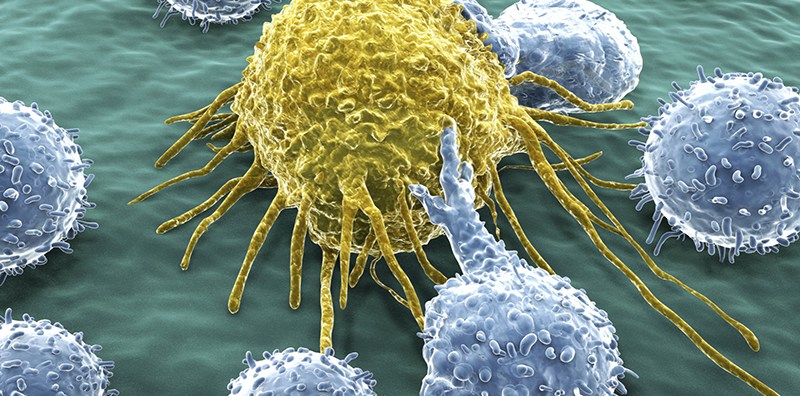
02:10 9th December 2017 | Tumours
Brain Cancer Skin Cells Stem Cells Tumour Cells Surgical Cavity Cancerous Tendrils
Glioblastoma, a very aggressive form of brain cancer, is extremely difficult to treat and the survival rate of patients beyond two years is only 30%. These tumours do not have clear borders; instead they have thread-like tendrils that extend into nearby areas of the brain. "So there's no possibility of surgically making sure you get every cell out there," Nader Sanai, director of neurosurgical oncology at the Barrow Neurological Institute in Phoenix, explains. Shots, Health News from NPR
A Possible Cure
Researchers at the University of North Carolina (UNC), a public research university in the USA, have transformed skin cells into stem cells that have the ability to ‘hunt down’ certain cancerous brain tumour cells and destroy them. The technique was tested on mice and was successful: survival time increased from 160 to 220%, depending on tumour type. Their study can be found in the Nature Communications journal. This medical breakthrough presents incredible life-saving possibilities.
The Technique and Thinking Behind the Research
The research team, led by Dr. Shawn Hingtgen P.hd, an assistant professor at UNC, wanted to improve the survival rate of patients with glioblastomas.
The procedure, aimed at destroying the stubborn cancerous tendrils, starts with reprogramming the subject’s skin cells to turn them into neural stem cells. In mice, these new neural stem cells naturally navigated the brain to find and destroy cancer cells that remained after tumour removal. Furthermore, the team was able to show how the same stem cells could be engineered to produce a tumor-killing protein for enhanced efficiency.
This is the first time this direct reprogramming technology has been used to treat cancer.” Dr. Hingtgen mentioned in a press release. In addition, Hingtgen’s team realised the stem cells needed a physical matrix to support and organise them within the surgical cavity to promote their ability to seek out the cancerous tendrils. This process was reported in the Biomaterials journal.
In the future, the research could lead to the development of drugs, that could enhance reprogrammed cells, to allow more efficient destruction of cancer cells.
If you have any questions, or if you want to book an appointment, please don’t hesitate to get in touch:
Email: [email protected]
Call: 01 631 0092 / Whatsapp: +234 (0)810 664 8871.
Visit us at Ikeja, Ikotun, Isolo or Victoria Island
Book an appointment online or search for a clinic close to you.
Book an AppointmentSearch by condition, treatment or keyword and conveniently browse our informative articles